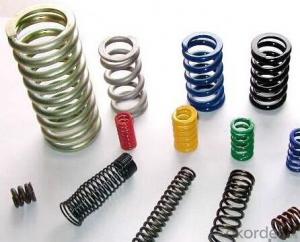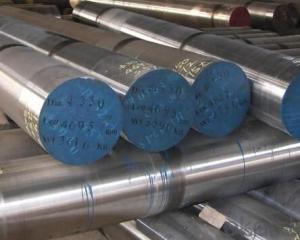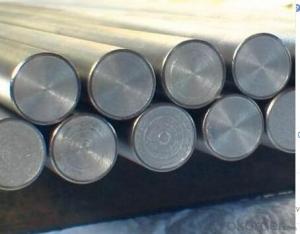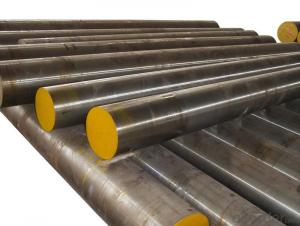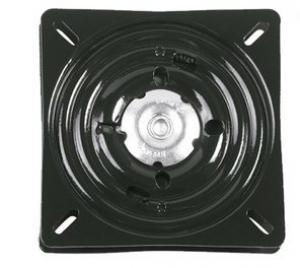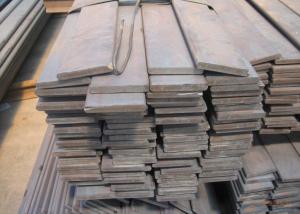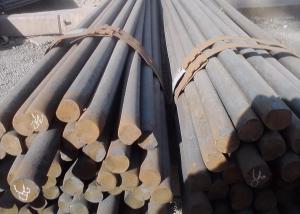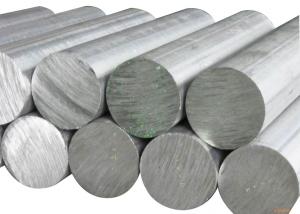Stainless Steel Compression Spring
- Loading Port:
- China Main Port
- Payment Terms:
- TT or LC
- Min Order Qty:
- -
- Supply Capability:
- -
OKorder Service Pledge
OKorder Financial Service
You Might Also Like
Product Description:
OKorder is offering Stainless Steel Compression Spring at great prices with worldwide shipping. Our supplier is a world-class manufacturer of steel, with our products utilized the world over. OKorder annually supplies products to European, North American and Asian markets. We provide quotations within 24 hours of receiving an inquiry and guarantee competitive prices.
Product Applications:
Stainless Steel Compression Spring are ideal for structural applications and are widely used in the construction of buildings and bridges, and the manufacturing, petrochemical, and transportation industries.
Product Advantages:
OKorder's Stainless Steel Compression Spring are durable, strong, and resist corrosion.
Main Product Features:
· Premium quality
· Prompt delivery & seaworthy packing (30 days after receiving deposit)
· Corrosion resistance
· Can be recycled and reused
· Mill test certification
· Professional Service
· Competitive pricing
Product Specifications:
Features of Heavy Duty Compression Spring:
1) Easily adjusted in coil diameter and pitch
2) Major materials: music wire, stainless
Features:
1) Easily adjusted in coil diameter and pitch
2) Major materials: music wire, stainless steel wire, oil tempered wire, spring steel
3) Different wire diameters, such as Ø4.0mm, 5.0mm, 8.0mm and 12.0mm
4)What kind of shape compression spring we can do for you?
Spring shape: Conical, Round and Rectangular, Hourglass, Barrel, Constant Pitch, Variable Pitch etc. see picture below
Product Information | |
product name | Heavy Duty Piston Compression Spring |
brand name | YD |
model number | YD009 |
certificate | ISO9001,RHOS |
material | carbon steel,alloy spring steel,music wire steel,and stainless steel,iron,plated steel,alloy steel,bronze,red bronze,phosphor copper,and beryllium copper;etc |
usage | car,all kinds of machines,motor,etc. |
galvanized | nickel-plated, chrome-plated, silver-plated, gold-plated, imitation gold-plated and so on or as your request |
package | all springs will be carefully packed and shipped to you with PE bags. |
payment | TT/LC |
shipment | all orders are dispatched within 7-10 business days by EMS, DHL or as your request after making payment.A Tracking Number will be sent to you via e-mail after your order has been shipped.If you do not receive the Tracking Number email within 7 business days of confirming payment, please check your spam folder and then contact us. |
PLEASE NOTE: Please allow 5-9 business days for your shipment to arrive. | |
FAQ:
Q1: Why buy Materials & Equipment from OKorder.com?
A1: All products offered byOKorder.com are carefully selected from China's most reliable manufacturing enterprises. Through its ISO certifications, OKorder.com adheres to the highest standards and a commitment to supply chain safety and customer satisfaction.
Q2: How do we guarantee the quality of our products?
A2: We have established an advanced quality management system which conducts strict quality tests at every step, from raw materials to the final product. At the same time, we provide extensive follow-up service assurances as required.
Q3: How soon can we receive the product after purchase?
A3: Within three days of placing an order, we will begin production. The specific shipping date is dependent upon international and government factors, but is typically 7 to 10 workdays.
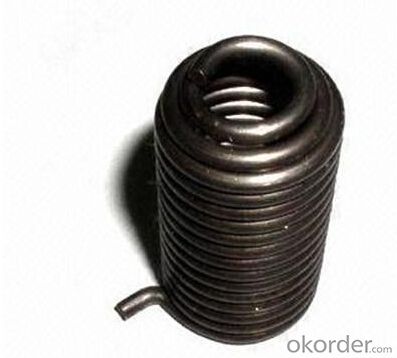

- Q:Can special steel be used in aerospace turbine components?
- Yes, special steel can be used in aerospace turbine components. Special steel alloys, such as nickel-based superalloys, are commonly used in the manufacturing of turbine blades and other critical components in aerospace engines. These alloys possess high strength, excellent corrosion resistance, and can withstand extreme temperatures and stress conditions, making them suitable for the demanding environment of aerospace turbines.
- Q:How does special steel perform in terms of electrical resistivity?
- Special steel typically has relatively high electrical resistivity compared to other materials. This means that it does not conduct electricity as efficiently as materials with lower resistivity.
- Q:What are the different casting grades of special steel?
- Special steel is a type of steel that is specially designed to possess specific exceptional properties, making it suitable for specialized applications. Within the realm of special steel, various casting grades are available, each with its own unique characteristics and uses. One commonly used casting grade of special steel is stainless steel, which contains a high percentage of chromium, giving it excellent corrosion resistance properties. It is extensively utilized in applications where resistance to oxidation, acids, and other corrosive elements is crucial, such as in the manufacturing of kitchen utensils, medical instruments, and chemical processing equipment. Another casting grade of special steel is tool steel, specifically formulated to exhibit exceptional hardness, wear resistance, and toughness. It is commonly employed in the production of cutting tools, dies, molds, and other tools that require high strength and durability. High-speed steel is an important casting grade of special steel, known for its exceptional heat resistance and ability to maintain hardness even at high temperatures. It finds widespread use in the production of cutting tools like drills, taps, and milling cutters, where the material is exposed to high temperatures generated during the cutting process. Moreover, there are casting grades of special steel specifically designed for use in extreme temperature environments. These grades, such as heat-resistant steel, are formulated to retain their strength and integrity even at elevated temperatures. Heat-resistant steel is commonly used in applications such as furnace components, exhaust systems, and gas turbines. In conclusion, the various casting grades of special steel offer a wide range of properties and applications. Stainless steel provides excellent corrosion resistance, tool steel offers exceptional hardness and toughness, high-speed steel is known for its heat resistance, and heat-resistant steel is designed to withstand extreme temperatures. These grades of special steel play a crucial role in various industries where specific applications require exceptional properties.
- Q:What are the challenges in recycling special steel?
- Recycling special steel poses several challenges due to its unique composition and properties. Firstly, special steel is often alloyed with various elements to enhance its strength, durability, and corrosion resistance. These alloys can make the recycling process more difficult and complex compared to recycling common steel. One of the main challenges is the separation of special steel from other metals during the recycling process. Special steel may contain rare and valuable elements such as nickel, chromium, and molybdenum, which are essential for its unique properties. Separating these elements from other metals requires advanced techniques and specialized equipment, increasing the complexity and cost of recycling. Another challenge is the presence of impurities in special steel. These impurities can be introduced during the manufacturing process or through contamination during use. Removing these impurities is crucial to ensure the recycled steel meets the required specifications for its intended applications. However, the high melting point and resistance to purification of some impurities may complicate the recycling process. Furthermore, the physical characteristics of special steel, such as its high hardness and toughness, can make it challenging to handle and process during recycling. Special steel often requires more energy-intensive methods, such as shredding or melting at higher temperatures, which can increase the overall cost and environmental impact of the recycling process. Moreover, the economic viability of recycling special steel can be a challenge. The market demand for special steel may fluctuate, making it difficult for recyclers to ensure a consistent and profitable supply. Additionally, the costs associated with the collection, transportation, sorting, and processing of special steel can be higher compared to common steel, further impacting the economic feasibility of recycling. In conclusion, the challenges in recycling special steel primarily stem from its complex composition, the need for separation from other metals, the presence of impurities, the physical characteristics of the material, and the economic viability of the recycling process. Addressing these challenges requires innovative technologies, efficient separation methods, and a sustainable market demand for recycled special steel.
- Q:What is the role of special steel in the oil and gas industry?
- Special steel plays a crucial role in the oil and gas industry as it is used for various applications that require high strength, corrosion resistance, and durability. It is extensively used in the construction of pipelines, offshore platforms, drilling equipment, and storage tanks. Special steel ensures the integrity and reliability of these critical components, enabling safe and efficient operations in the challenging and harsh environments of the oil and gas industry.
- Q:Can special steel be used for medical applications?
- Yes, special steel can be used for medical applications. Specialized types of stainless steel, such as AISI 316L or 316LVM, are commonly used in medical devices and implants due to their excellent corrosion resistance, biocompatibility, and strength. These steels are often used in surgical instruments, orthopedic implants, cardiovascular devices, and many other medical applications.
- Q:How is special steel used in the textile industry?
- Special steel is used in the textile industry for various purposes such as manufacturing machinery components, needles, and cutting tools. It provides durability, strength, and resistance to wear and tear, ensuring the efficient operation of textile machinery and improving the overall production process. Additionally, special steel is utilized in the production of textile blades, which are crucial for precision cutting and shaping of fabrics.
- Q:How does special steel perform in hydrogen embrittlement conditions?
- Special steel, also known as high-strength steel or alloy steel, typically exhibits excellent resistance to hydrogen embrittlement conditions. Hydrogen embrittlement is a phenomenon in which hydrogen atoms invade the metal's lattice structure, causing it to become brittle and prone to fractures under stress. Due to their unique composition and microstructure, special steels are designed to withstand harsh environments, including hydrogen embrittlement conditions. These steels often contain alloying elements such as nickel, chromium, and molybdenum, which enhance their resistance to hydrogen-induced cracking. The presence of these alloying elements in special steel promotes the formation of protective oxide layers on the steel's surface, which act as a barrier to prevent hydrogen atoms from diffusing into the metal matrix. Additionally, these elements can trap and bind hydrogen atoms, reducing their mobility and minimizing their detrimental effects on the steel's mechanical properties. Furthermore, special steels are often subjected to various heat treatments and processing techniques, such as quenching and tempering, to further enhance their resistance to hydrogen embrittlement. These processes help refine the steel's microstructure, improving its strength, toughness, and ductility while minimizing the potential for hydrogen-induced cracking. Overall, special steel demonstrates superior performance in hydrogen embrittlement conditions compared to standard steels. Its unique composition, microstructure, and processing techniques make it highly resistant to the detrimental effects of hydrogen atoms, ensuring the structural integrity and reliability of components and structures operating in hydrogen-rich environments.
- Q:What are the different surface modification techniques used for special steel?
- There are several surface modification techniques used for special steel to enhance its properties and improve its performance in specific applications. Some of the common techniques include: 1. Nitriding: Nitriding is a surface hardening process that involves the diffusion of nitrogen into the steel surface. It forms a hard layer of nitrides, which significantly increases the surface hardness, wear resistance, and fatigue strength of the steel. 2. Carbonitriding: Carbonitriding is a similar process to nitriding, but it involves the diffusion of both carbon and nitrogen into the steel surface. This technique increases the surface hardness and also improves the wear resistance and fatigue strength of the steel. 3. Case hardening: Case hardening involves the addition of a hard, wear-resistant layer to the surface of the steel. This can be achieved through processes like carburizing or carbonitriding, where carbon is introduced into the surface layer, transforming it into a high-carbon martensitic layer. 4. Shot peening: Shot peening is a technique that involves bombarding the steel surface with small, high-velocity shots of media, such as steel, ceramic, or glass beads. This process induces compressive stresses on the surface, improving its fatigue strength and resistance to stress corrosion cracking. 5. Electroplating: Electroplating is a common technique used to apply a thin layer of metal coating onto the steel surface. This can be done with various metals like zinc, nickel, or chromium, providing protection against corrosion, improving aesthetics, and enhancing wear resistance. 6. Physical vapor deposition (PVD): PVD is a coating technique that involves depositing thin layers of material onto the steel surface through a vacuum process. This technique can be used to apply coatings like titanium nitride (TiN), which provides excellent wear resistance and reduces friction. 7. Laser surface modification: Laser surface modification techniques, such as laser hardening or laser alloying, use a high-energy laser beam to selectively heat and modify the steel surface. This process can improve hardness, wear resistance, and corrosion resistance. These surface modification techniques can be tailored to meet specific requirements, enhancing the properties of special steel for various applications in industries such as automotive, aerospace, and tooling.
- Q:How does special steel perform in magnetic applications?
- Special steel, also known as stainless steel, generally performs well in magnetic applications. However, it is important to note that not all types of stainless steel are magnetic. The magnetic properties of special steel depend on its composition and the presence of certain elements such as nickel, manganese, and chromium. Austenitic stainless steel, which is the most common type, is non-magnetic due to its high nickel content. This makes it ideal for applications where magnetic interference is undesirable, such as in sensitive electronic devices or medical equipment. On the other hand, ferritic and martensitic stainless steels, which have lower nickel content, are magnetic. These types of special steel are commonly used in applications where magnetic properties are required, such as in magnetic separators, transformers, and electric motors. It is worth mentioning that the magnetic strength of stainless steel is relatively weak compared to other magnetic materials like iron or nickel. Therefore, if a strong magnetic field is needed, alternative materials may be more suitable. Overall, special steel can perform well in magnetic applications depending on the specific type and composition. It is important to consider the desired magnetic properties and consult with experts or refer to material specifications to ensure the appropriate selection for a particular application.
1. Manufacturer Overview |
|
|---|---|
| Location | |
| Year Established | |
| Annual Output Value | |
| Main Markets | |
| Company Certifications | |
2. Manufacturer Certificates |
|
|---|---|
| a) Certification Name | |
| Range | |
| Reference | |
| Validity Period | |
3. Manufacturer Capability |
|
|---|---|
| a)Trade Capacity | |
| Nearest Port | |
| Export Percentage | |
| No.of Employees in Trade Department | |
| Language Spoken: | |
| b)Factory Information | |
| Factory Size: | |
| No. of Production Lines | |
| Contract Manufacturing | |
| Product Price Range | |
Send your message to us
Stainless Steel Compression Spring
- Loading Port:
- China Main Port
- Payment Terms:
- TT or LC
- Min Order Qty:
- -
- Supply Capability:
- -
OKorder Service Pledge
OKorder Financial Service
Similar products
New products
Hot products
Hot Searches
Related keywords
